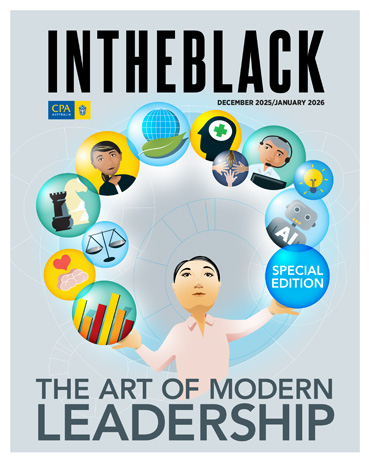Loading component...
At a glance
In a rapidly evolving industry like accounting, change brings not just challenge but opportunity.
Here are the top 5 workplace trends accountants and finance professionals should know about for 2025.
1. More four-day work weeks
The condensed working week is incrementally gaining traction worldwide.
The prevailing 100:80:100 model, designed by New Zealand-based not for profit 4 Day Week Global, lets staff reduce full-time hours to 80 per cent but keep 100 per cent of their pay, on the proviso that they output 100 per cent productivity.
Successful programs have run across 14 countries. Australian health insurer Medibank has announced plans to double its number of employees working four days to 500.
“Companies are negotiating on a team-by-team basis because it’s not a one-size-fits-all solution,” notes Angela Anasis, leader of talent solutions at global recruitment firm Randstad.
“A common hurdle, from the employer perspective, is the need to ensure consistency in customer relations,” she says. “But negotiating a four-day week for employees may be easier when you’ve proved your mettle in the job.”
2. Prompt mastery is essential
If you thought generative AI was a passing trend, think again. The Tech Council of Australia predicts more than 200,000 AI-proficient workers are needed in Australia by 2030.
Consulting firm KPMG’s new global AI in Finance survey of 2900 organisations, including 100 in Australia, reveals 72 per cent of businesses already use AI in their finance operations, with 45 per cent of Australian (and 47 per cent of global) companies planning or piloting generative AI specifically.
Engagement is running strong, says Jason Fogaty, technology & AI strategy lead at KPMG Australia where 5000 accountants are now trained on new AI skills and its proprietary KymChat platform.
Popular uses are research and data analysis, creating documents and reports, scenario planning and “what if” predictions.
Prompting is a core skill and involves more than a simple question you might ask of an internet search engine, explains Fogaty. An effective prompt needs to tell the AI:
- The role: Whose perspective it should take?
- The objective: What do you want it to do?
- The background: Give the AI context. For example, which market or sector is relevant?
- The structure: How do you want the response formatted – bullet points, a table with headings, as a narrative?
Next come more complex chain-of-thought prompting techniques, where the user guides the AI through a sequence of steps.
“Keeping a human in the loop at all times to sense-check results for accuracy and credible sources is essential,” Fogaty emphasises.
3. Increased ESG transparency
Mandatory climate reporting kicked off for large organisations in Australia from 1 January 2025, but progressive organisations are looking beyond net-zero goals.
Investors are expecting greater transparency and accountability across a range of ESG areas, confirms Estelle Parker, co-CEO of the Responsible Investment Association Australasia. Topping their lists are climate change (86 per cent), diversity (80 per cent) and human rights (74 cent), a new report shows.
“We’re also seeing a notable rise in engagement on areas like Indigenous rights and cultural heritage protection (56 per cent), natural capital (48 per cent) and education (30 per cent),” Parker says, noting a shifting focus to diverse social and environmental challenges.
The Taskforce on Inequality and Social-related Financial Disclosures launched in September 2024 is a likely precursor to measuring and disclosing on inequality and social-related impacts.
“Demand for accountability will only grow, and early adopters will gain a competitive edge,” Parker tips.
4. Focus on emotional intelligence
From exponential tech change to organisational transformation to economic shifts, dealing with business complexity demands a sharper focus on emotional intelligence (EI).
“EI is essential in leadership, and sales and service roles,” observes Sue Langley, CEO and founder of the Langley Group, who heads a team of international human resources consultants and educators. Finance is also a hotspot for EI “because emotions often run high when money is involved,” Langley points out.
Fresh emphasis on emotions at work has also come with Australia’s world-leading legislation requiring employers to manage psychosocial hazards.
Langley says there are four key abilities for EI development.
- Perceiving emotions: Can you identify feelings in self and others?
- Using emotions: Know-how is needed to leverage emotions to help with cognitive tasks, from big-picture thinking to connecting with someone through empathy.
- Understanding emotions: What are the universal triggers for emotions and how do they progress over time?
- Managing emotions: Bringing together the three prior steps can help leaders and their teams thrive.
“Raising EI can be as simple as practising what to say (and what not to say) in specific circumstances,” Langley says.
Langley recommends taking The Mayer-Salovey-Caruso Emotional Intelligence Test (MSCEIT) and reading Susan David’s book Emotional Agility to learn more about EI quotients.
5. Return-to-office mandates
Big brands like Amazon, Flight Centre, Dell and Tabcorp have ordered employees back to work full-time in the office, rebounding from the remote and hybrid-work practices that became ubiquitous post-pandemic.
Employer focus is on skills transfer between workers and productivity, with some enticing people back with free gym memberships, meals and transport to the office.
The winning trade-off for relinquishing flexibility for workers is typically a big pay rise, says Anasis. Of course, much depends on the sector and, importantly, what competitor organisations are doing, she suggests.
“It’s an issue employers need to handle with care,” she says. “Flexibility is a dealbreaker and many people will vote with their feet.”

